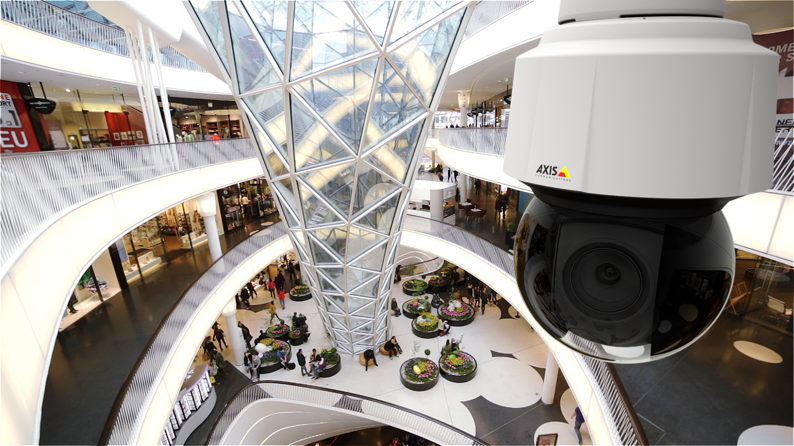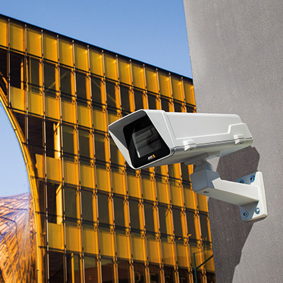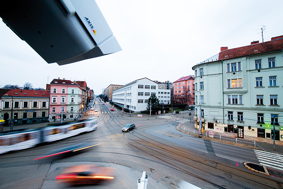Locks and Security News: your weekly locks and security industry newsletter
2nd July 2025 Issue no. 760
Your industry news - first
We strongly recommend viewing Locks and Security News full size in your web browser. Click our masthead above to visit our website version.
From security to intelligence: the evolution of the IP surveillance camera
 David Needham, UK and Ireland Sales Manager at Axis Communications, discusses how the rise of IP technology has created a shift towards greater levels of business intelligence and further collaboration with IT & security installers.
David Needham, UK and Ireland Sales Manager at Axis Communications, discusses how the rise of IP technology has created a shift towards greater levels of business intelligence and further collaboration with IT & security installers.
The physical security industry took a dramatic leap forward in 1996 with the launch of the very first IP camera, the NetEye 200. Despite its low performance capabilities - approximately one CIF image every 17 seconds - it began a chain of events that created a global change in the way security and surveillance technology is used.
Not limited to a structural shift from traditional analogue technologies, such as CCTV, to network connected devices including IP cameras, the innovations in networked technology also facilitated the development of analytical applications. This pushed physical security technology from the realms of pure surveillance, in to one where business intelligence delivered insights to help optimise company-wide decision making and performance.
 The evolution of IP
The evolution of IP
The 'early adopters' of the world's first IP camera were predominantly from the IT sector - those keen to explore the possibilities of new technology. Since then there have been great, game changing innovations which have helped the market for networked physical security technology skyrocket. These were namely Power over Ethernet (PoE), HDTV and H264 compression. PoE transformed how cameras are installed, significantly reducing the cabling infrastructure needed. HDTV and H264 worked together in unison - as the quality of video output significantly improved, the storage requirements grew exponentially.
In the years following, the industry focus fell on the transition from analogue to digital security. Today, forward thinking companies are those proactively seeking to utilise network video to create new business opportunities beyond security and surveillance. Video is becoming a data-rich resource that can be analysed to enhance business operations.
And video isn't the only technology that benefitted from the IP revolution. Open access control, in particular, can now be integrated with other software and hardware systems to deliver a truly state of the art door entry system with two factor authentication, providing enhanced security, scalability and flexibility. IP audio meanwhile is helping retailers increase safety and enhance the customer experience with automated public announcements and music scheduling.
Effective deployments of network surveillance
The true value digital brings is its network capabilities. The future is one where video communicates seamlessly with other previously independent systems, helping to make initiatives such as smart buildings and smart cities a reality. Technology that once operated at 1 frame per second is now capable of machine learning, footfall monitoring, high-level analytics and much more.
 For example in retail, Rajalla På Gränsen in Finland is one of the first shopping centres in Europe to use intelligent analytic technologies through IoT security cameras to learn more about its visitors, therefore improving their overall shopping experience. This has been done by analysing information about visitor numbers and statistics on the time of day they visit.
For example in retail, Rajalla På Gränsen in Finland is one of the first shopping centres in Europe to use intelligent analytic technologies through IoT security cameras to learn more about its visitors, therefore improving their overall shopping experience. This has been done by analysing information about visitor numbers and statistics on the time of day they visit.
Furthermore on our railways, utilising modern surveillance technology for predictive maintenance means that beyond security, this technology can recognise and trigger alerts for an important event - ranging from damage to infrastructure, tools left on the tracks, or even overgrown and overhanging shrubbery that requires cutting back.
As technology continues to improve, integrators and their customers are always on the lookout for innovative ways to supplement traditional surveillance with innovative business intelligence applications. Smart cities, transportation and retail are just some of the sectors expected to benefit from the next IP revolution, where intelligent physical security technology is responsible for driving operational efficiencies.
To learn more about the shift from analogue to digital in the physical security market, visit: www.axis.com
8th May 2019








